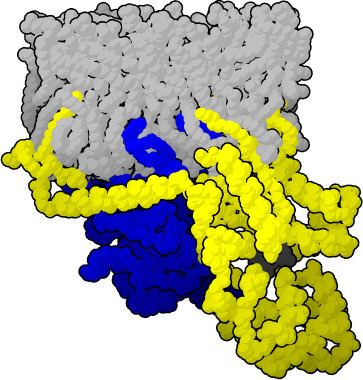EC number 3.6.5.1 ExPASy NiceZyme view | CAS number 9059-32-9 | |
 | ||
"G protein" usually refers to the membrane-associated heterotrimeric G proteins, sometimes referred to as the "large" G proteins (as opposed to the subclass of smaller, monomeric small GTPases) . These proteins are activated by G protein-coupled receptors and are made up of alpha (α), beta (β) and gamma (γ) subunits, the latter two referred to as the beta-gamma complex.
Contents
There are four main families of G proteins: Gi/Go, Gq, Gs, and G12.
Alpha subunits
Reconstitution experiments carried out in the early 1980s showed that purified Gα subunits can directly activate effector enzymes. The GTP form of the α subunit of transducin (Gt) activates the cyclic GMP phosphodiesterase from retinal rod outer segments, and the GTP form of the α subunit of the stimulatory G protein (Gs) activates hormone-sensitive adenylate cyclase.
Gα subunits consist of two domains, the GTPase domain, and the alpha-helical domain.
There exist at least 20 different Gα subunits, which are separated into four main families. This nomenclature is based on their sequence homologies:
Beta-gamma complex
The β and γ subunits are closely bound to one another and are referred to as the beta-gamma complex. Upon activation of the GPCR, the Gβγ complex is released from the Gα subunit after its GDP-GTP exchange.
Function
The free Gβγ complex can act as a signaling molecule itself, by activating other second messengers or by gating ion channels directly.
For example, the Gβγ complex, when bound to histamine receptors, can activate phospholipase A2. Gβγ complexes bound to muscarinic acetylcholine receptors, on the other hand, directly open G protein-coupled inward rectifying potassium channels (GIRKs). They can also activate L-type calcium channels, as in H3 receptor pharmacology.
